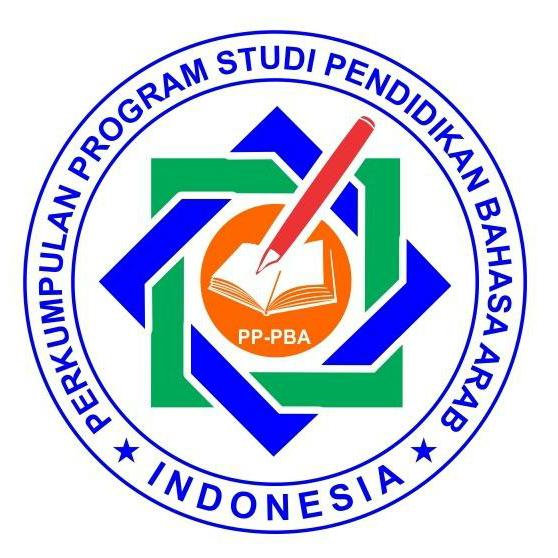Taḥlīl al-Dalāli fī Qaṣīdah “Ażfaita” li al-Syaikh Misyārī Rāsyīd al-‘Affāsī
The Semantic Analysis of the Lyric "Azfaita" by Sheikh Misyārī Rāsyīd al-‘Affāsī
DOI:
https://doi.org/10.37680/aphorisme.v3i1.1126Keywords:
Ażfaita, Misyārī Rāsyīd, SemanticsAbstract
This study reveals the various responses to the text of Nazm Alfiyyah Ibn Malik's stanza that developed in Indonesia, especially among Islamic boarding schools. The author uses the aesthetic theory of literary reception by placing Naẓm Alfiyyah Ibn Mālik as a literary text. The results of this study are; The Islamic Boarding School gave birth to two models of responses, responses in the form of works as a whole and responses partially. The first model of Islamic boarding school has a relatively similar response to that of Arab Islamic scholars, tends to be textual so that it is only able to fill a small part of the space in the text of the Nazm Alfiyyah stanza. The second model of Islamic boarding schools gave birth to responses that tended to be contextualistic, out of the nahwu-sarf discussion so that they were able to fill more empty spaces than the first group. From the academics who gave birth to a scientific paper, the response of this group was relatively the same as the first model Islamic boarding school, only the reading process was carried out partially and strictly followed established scientific rules. The creative reader community, who are widely circulated in cyberspace (social media) have responses that tend to be strange (weird), out of habits (rules) that have been established both among Arab Islamic scholars, Islamic boarding schools, and academics.
References
Chaer. (2003). Psikolinguistik; Kajian Teoritik. Rineka Cipta.
Ernawati, E. (2017). النظرية الإشارية والتصورية. Imtiyaz; Jurnal Pendidikan Dan Bahasa Arab, 1. https://doi.org/https://dx.doi.org/10.29300/im.v1iI
Fahruroji, dan Y. C. A. (2017). Perspketif Sālawat di dalam al-Qur’an dan Al-Hadist serta Implikasinya di dalam Penafsiran dan Penerapan Hukum (Analisis Semantik tentang Sālawat kepada Nabi Muhammad SAW). Jurnal Pendidikan Basis Bahasa Dan Studi Islam.
Hanafi, W. (2017). Linguistik Al-Qur’an (Reinterpretasi Makna Manusia di Balik Surat Al-Fatihah dalam Wacana Seantik). Studi Quranika. 2, 1131. https://doi.org/http://dx.doi.org/10.21111/studiquran.v2i1
Ilmiah, H. (2014). Analisis Lirik Lagu Sebelum Cahaya dalam Kajian Semantik. Jurnal Pendidikan Bahasa Dan Sastra Indonesia Universitas Negeri Surabaya.
Imron, M. (2018). Semiotika dalam Lirik Lagu Arab Kun Anta. UIN Syarif Hidayatullah.
Kholison, M. (2018). Semantik Bahasa Arab. Lisan Arabi.
Musdalifah, M. (2018). تطوير المعجم المساعد للكتاب “العربية للناشئين” الثالث على أساس التظرية الإشارية في برنامج المكثف لتعليم اللغة العربية جامعة مولانا مالك إبراهيم الإسلامية الحكومية مالانق. Universitas Islam Negeri Maulana Malik Ibrahim.
Pranowo. (2015). Teori Pembelajaran Bahasa Arab. Pustaka Pelajar.
Sugiyono. (2016). Metode Penelitian Pendidikan: pendekatan kuantitatif, kualitatif, dan R&D. Alfabeta.
الجرجاني، م. (1991). كتاب التعريفات. دار الرشاد.
الجرجاني، م. (1993). وصف اللغة العربية دلاليا في ضوء مفهوم الدلالة المركزية. جامعة الفاتح.
سالم سليمان. (1428). المعجم وعلم الدلالة. لسان العرب.
عمر، م. (1998). علم الدلالة. عالم الكتب.
Downloads
Published
Issue
Section
License
Authors who publish with this journal agree to the following terms:
Authors retain copyright and grant the journal right of first publication with the work simultaneously licensed under a Creative Commons Attribution-NonCommercial 4.0 International License that allows others to share the work with an acknowledgement of the work's authorship and initial publication in this journal.
Authors are able to enter into separate, additional contractual arrangements for the non-exclusive distribution of the journal's published version of the work (e.g., post it to an institutional repository or publish it in a book), with an acknowledgement of its initial publication in this journal.
Authors are permitted and encouraged to post their work online (e.g., in institutional repositories or on their website) prior to and during the submission process, as it can lead to productive exchanges, as well as earlier and greater citation of published work.





.jpg)


1.jpg)
